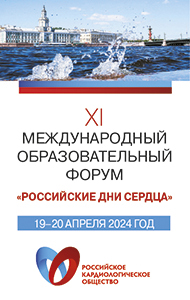ACC: Ablation Beats Amiodarone for Afib in HF
Fewer recurrences of atrial fibrillation, reduced hospitalization, and better survival.
AN DIEGO -- Catheter ablation of persistent atrial fibrillation (Afib) in patients with congestive heart failure (CHF) reduced arrhythmia recurrence compared with treatment with amiodarone.
Ablation also reduced hospitalization rates and mortality compared with amiodarone treatment, reported Luigi Di Biase, MD, PhD, of Montefiore Medical Center in New York City, and colleagues.
ADVERTISEMENT
The AATAC-AF in Heart Failure trial findings were presented at a late-breaking clinical trial session at the American College of Cardiology annual meeting.
Knowing the effects of ablation in the heart failure patient population is valuable since it has not been widely studied, said panel discussant John Jarcho MD, a cardiologist at Brigham and Women's Hospital in Boston.
Since Afib makes heart failure worse and vice versa, patients with left ventricular dysfunction are a particularly difficult group of patients to manage, he added.
The trial is an important one for the heart failure community, especially since as many as half of patients with advanced heart failure have Afib, Clyde Yancy, MD, chief of the division of medicine-cardiology at Northwestern University in Chicago, told MedPage Today.
"There are no large studies using ablative therapies in patients who have established heart failure with very reduced ejection fractions and concomitant atrial fibrillation," Yancy said. "We know from experience that heart failure sometimes behaves differently with either drugs or devices."
ADVERTISEMENT
The trial included 203 patients over the age of 18 who had persistent Afib, New York Heart Association class II or III heart failure, a left ventricular ejection fraction of 40% or less, and a dual chamber implantable cardioverter defibrillator or cardiac resynchronization therapy device.
The patients were randomized to be treated with catheter ablation or amiodarone.
The main goal of the ablation procedure was pulmonary vein antrum isolation. Additional linear lesions, ablation of complex fractionated electrogram, and elimination of non-pulmonary vein triggers were advised but performed according to the preference of the operator.
In the ablation arm, a second ablation was allowed in the 3-month blanking period.
The two groups did not differ in their left atrium size, left ventricular ejection fraction, or median Afib duration. Patients were followed for 2 years.
The primary endpoint was recurrence of Afib. Long-term procedural success was defined as freedom of Afib, atrial flutter, or atrial tachycardia of greater than 30 seconds off antiarrhythmic drugs.
At 26 months, a significantly greater number of patients in the ablation arm compared with the amiodarone arm had freedom from recurrence of Afib (70% versus 34%, P< 0.001).
This translated to a hazard ratio of 2.5 for patients on amiodarone therapy compared with ablation (95% CI 1.5-4.3, P<0.001).
There was a higher success rate in patients who underwent pulmonary vein isolation in addition to ablation of non-pulmonary vein triggers (78.8% versus 36.4%, P<0.001).
A particular strength of the study was how recurrence of Afib was monitored, Jarcho pointed out, explaining that because only patients with indwelling devices were enrolled, researchers had a higher degree of accuracy in recognizing when Afib was occurring.
But the trial's findings should be generalizable to heart failure patients without implanted devices, Jarcho and Di Biase agreed.
A total of 10.4% patients in the amiodarone group discontinued the medication due to adverse side effects, including thyroid toxicity, pulmonary toxicity, and liver dysfunction.
Secondary endpoints were all-cause mortality and hospitalization rate over 2 years, both of which were significantly lower in the ablation group (18% versus 8%, P=0.037 and 57% versus 31%, P<0.001, respectively).
Patients who were free from recurrence showed significant improvements in left ventricular ejection fraction (improvement of 9.6% versus 4.2%, P<0.001), as well as 6-minute walk distance and quality of life measures.
The trial was too small to make conclusions about whether restoring sinus rhythm improves cardiac function in heart failure patients, cautioned Kim Eagle, MD, director of the Cardiovascular Center at the University of Michigan Health System in Ann Arbor.
"But there was some signal here that raises the question of whether it's possible," Eagle told MedPage Today. "It makes me want to see another larger trial."
Source: www.medpagetoday.com






